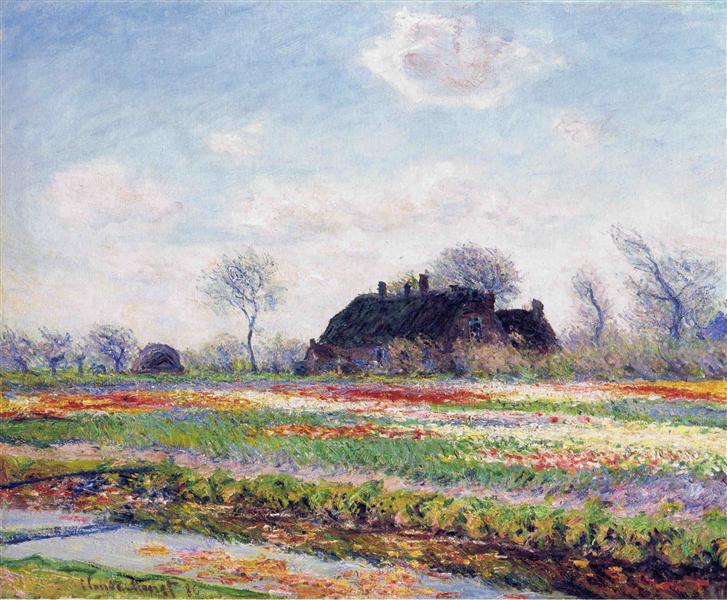Description
The painting "Tulipanes fields in Sassenheim - near Leiden" by Claude Monet, created in 1886, is a revealing example of the artist's approach to nature and its representation through light and color. This work, like many of the paintings From Monet, Encapsula not only an idyllic rural scene of the Netherlands, but also captures the essence of the impressionist movement, of which Monet was a pioneer.
When observing the composition of the work, you can see a vast field of tulips that extends to the horizon, in a vibrant variety of colors that go from intense red to bright yellow. The way in which color bands are structured seems to suggest a rhythm inside the paint, where each strip of tulips overlaps another, creating a depth effect and movement. This zenith, characteristic of Monet's style, aims to convey the immediacy of visual experience, confronting the viewer with the ephemeral beauty of flowering.
The color palette used in "Tulipanes fields" is particularly shocking. Monet, known for its ability to use color emotionally and expressively, uses touches of vibrant and loose brush that give life to each tulip and fill them with light. Shadows play an essential role in the work, creating a dynamic dialogue between warm and cold colors, and emphasizing the three -dimensionality of flowers. This game of lights and shadows, which seems to attract the viewer to walk through the field, highlights one of the main concerns of impressionism: the study of light in nature.
In terms of characters, painting lacks visible human figures, a common feature in many of Monet's works. However, in its absence, the work suggests human presence through the obvious work of cultivation of the field, leading the viewer to an introspective contemplation on the role of man in nature. The absence of characters also emphasizes the magnificence of the landscape, making it the undisputed protagonist of the work.
Monet painted this work during one of his visits to the Netherlands, where he was captivated by the vibrant flower fields. This work not only illustrates its admiration for natural beauty, but it is also testimony of its romantization of the environment. Monet's ability to transmit the rjuphoria of an ephemeral moment becomes a significant legacy that feels in his work. This approach to nature is also reflected in other works such as "the Nenufare series" and "the Giverny Gardens", where their obsession with light and color unfolds in various variants.
"Tulipanes fields in Sassenheim" is not only a paradigmatic example of the use of color and light within impressionism, but it is also a portal to understand the relationship between art and nature. Monet, capturing this ephemeral moment, invites us to appreciate the ephemeral beauty of life, a message that resonates over time. In a world that often seems hurried, the viewer is in a reflexive pause, looking towards the endless fields of tulips, remembering the importance of beauty that manifests around us.
KUADROS ©, a famous paint on your wall.
Hand-made oil painting reproductions, with the quality of professional artists and the distinctive seal of KUADROS ©.
Reproduction service paintings With a guarantee of satisfaction. If you are not completely satisfied with the replica of your painting, we refund your money 100%.

